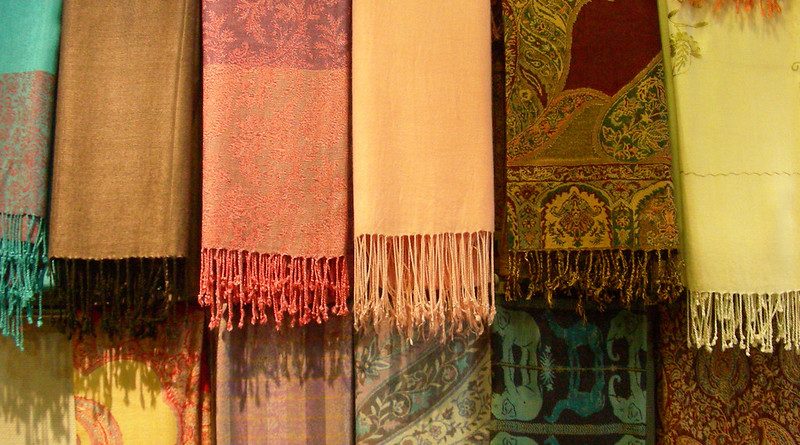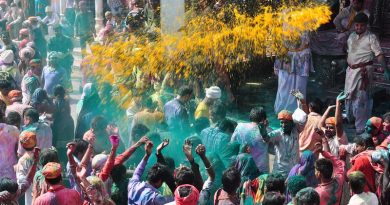Underbelly of Himalayan Goat: Pashmina
Shopping Essentials
Where: Himalayas, Nepal, Northwest Asia
What’s in store: Luxurious soft and incredibly warm fabrics and shawls made from the Capra Hircus goat
What’s it worth: From $30 in Kathmandu, several hundred dollars in Western department stores
Pashmina was considered a fine, luxurious fibre by the ancient Mogul emperors, who took as much pride in their stunning shawls as they did in their precious jewels. It has been regarded as an essential element of any well-to-do lady’s wardrobe since the 18th century, when the exquisite fabric captured the attention of fashionable circles throughout the western world.
Light, soft, and sensual to the touch, pashmina wool, also known as cashmere, is incredibly warm. The word pashmina actually comes from the word ‘pashm’, meaning ‘warmth’. The wool comes from the underbelly of the Capra Hircus goat, which wanders in the sub zero temperatures of the high Himalayas in Nepal, some 14,000 feet above sea level. The goats grow this extra layer each winter to insulate themselves against the rigours of this extreme climate.
If properly cared for, pashmina garments will last a lifetime, and actually become even softer on the skin with wear. Pashmina garments are handed down through the generations of wealthy families as heirlooms.
Master Craftsmen
With the coming of summer, the Himalayan goats shed their warm winter coats. Their underbellies are covered with two different types of wool: the fine, soft pashmina and a coarser outer layer. The wool is gathered by local women, who comb it thoroughly to separate the pashmina from the thicker, less luxuriant wool.
Each pashmina fibre is about one sixth the width of a human hair, and one shawl requires about 24 ounces of wool, the annual output of about 4 goats. Pashmina is too delicate for mechanical looms, and must therefore be spun and woven by hand. The techniques for producing fine pashmina products have been handed down through the generations, and sometimes the women in a family have carried out the practice since the days of the Mogul Empire.
Pashmina wool is often woven together with Chinese silk. Not only does the silk retain warmth but it also gives the finished product a shiny sleekness and added durability. The yarn is hand-dyed either before or after weaving, using either natural vegetable pigments or dyes which do not contain metals.
Where to Bag a Bargain
Pashmina’s popularity has led to extortionate prices in department stores throughout the western world. Those who can’t resist the lure of a soft, sensual pashmina shawl might find themselves shelling several hundred dollars for the object of their desire, albeit of the finest quality.
You’re bound to get better value if you buy direct from the community which makes these lusted after garments. Shops and stalls throughout Kathmandu sell a huge variety of different coloured pashmina products, and are usually open to offers short of the asking price – often as low as $30 for a shawl.
More Information
Info Nepal
Useful site containing general information about Nepal, its communities, commerce and travel news.
By Jess Halliday




